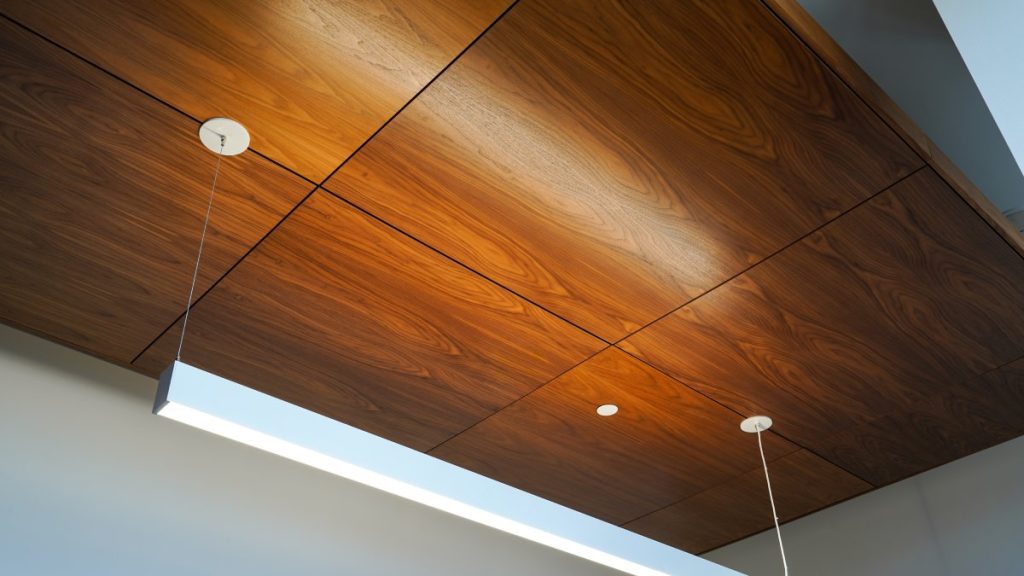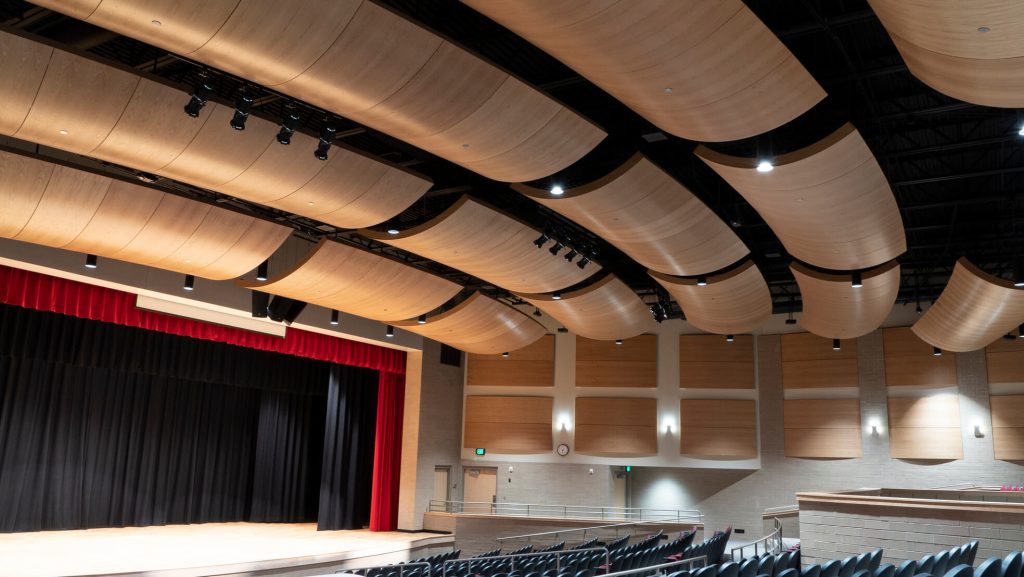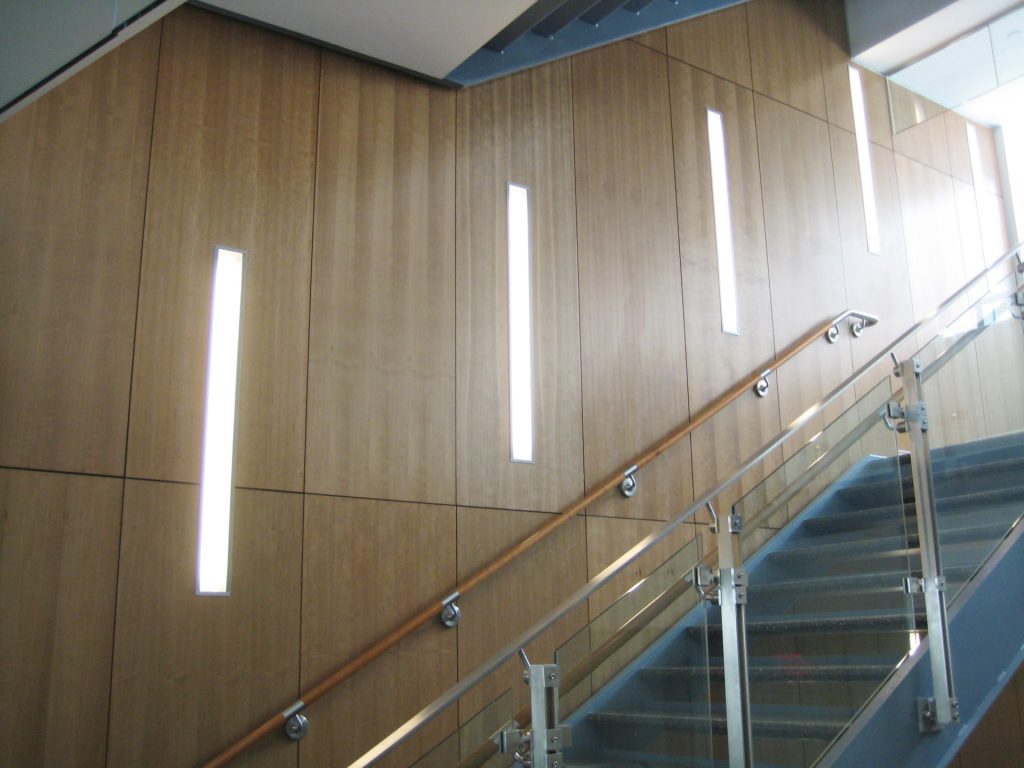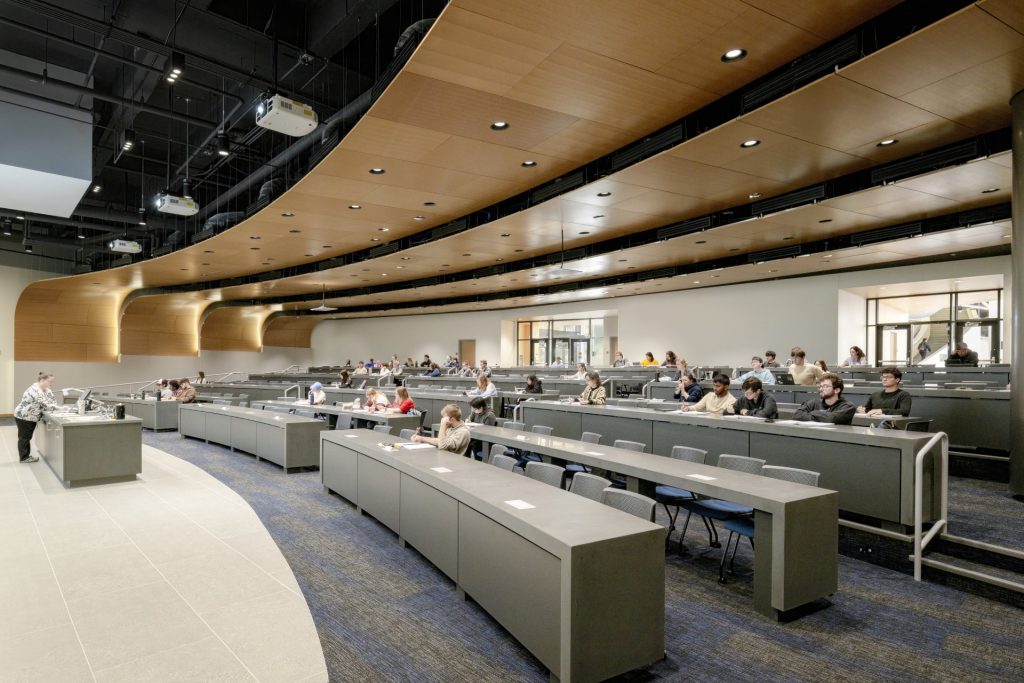
When it comes to design, the species of architectural wood materials you choose will help set the performance, durability, feel, and tone of an entire project, as well as the atmosphere and narrative of the space. Whether you’re using oak in architecture, designing with walnut and other exotic wood architecture choices, or prioritizing sustainability, the species of wood you select will shape your space’s tone, texture, and environmental story.
In this article, we explain what to consider when choosing wood species for architectural design, the balance between domestic and exotic wood options for commercial spaces, and how ASI Architectural solutions support both performance and aesthetics. And once you’re done understanding this, learn how architects are using white oak in modern commercial settings in ASI Architectural’s guide on design trends and applications of white oak plywood.
Visual and Grain Patterns
Wood is a dynamic material that carries the signature of its provenance, climate, and history. Wood grain patterns, from the tight, orderly lines in maple to the broad cathedrals in oak, can influence the perceived effect of a surface. It is this understanding of grain patterns in wood that helps architects choose surfaces that work well with the planned mood of a space, whether it be bold statement grains to subtle, refined finishes.
To explain further, grain patterns add visual and emotional texture to a surface, for instance, species such as cherry or walnut can express warmth or luxury through their reddish or brownish hues.
Tones: Warmth and Coolness in Color Palettes
Tone in wood species directly impacts mood and spatial narrative. For example:
- Warm reddish hues (cherry, red oak) suggest hospitality and tradition
- Cool, pale woods (birch, white oak) convey minimalism and clean lines
The emotional quality of wood tones is instrumental in interior design and architectural wood materials, telling their own unique stories.
Grain and Texture: Subtle or Dramatic Surfaces
Some wood species are defined by their dramatic grain figures, like walnut and ash, while others are prized for their smooth, unobtrusive textures, such as maple. Figured woods, with their swirling or unique grain patterns, can serve as architectural statement materials for feature ceilings or architectural wood panels, enriching the design narrative, so it only makes sense why thoughtfully evaluating wood tones and textures is critical for aligning materiality with spatial intent and architectural storytelling.
Finishes and Treatments to Enhance Wood Performance
Wood species are just the beginning of the design and performance conversation. High performance commercial wood finishes and treatments applied to commercial wood significantly expand design and performance possibilities. For example:
- Stains and dyes can darken or lighten tones to match the brand identity or architectural wood panels’ color palette. Custom stains and topcoats also allow premium species to maintain high-performance in high-traffic areas without sacrificing sustainability or design goals.
- Sealants and coatings can increase or decrease grain visibility, amplify or mute the natural wood tones, and greatly enhance durability and moisture resistance for long-term use.
Architectural wood panels from ASI Architectural can be specified with factory-applied finishes and treatments that offer control over the long-term performance, aesthetics, and maintenance of the finished surfaces.
Red Oak vs. White Oak: What’s the Difference?
Red oak and white oak are two of the most popular choices for interior wood applications, and both are considered durable wood for architecture but they also have differences that make them best suited for different projects. For instance:
- Appearance: Red oak properties include a warm reddish or pinkish undertone and a pronounced open grain pattern. White oak has cooler, beige-gray hues with a tighter grain pattern.
- Hardness: White oak is generally harder and denser, leading to more commercial wear and durability. Key white oak characteristics are its closed grain and excellent resistance to moisture, which make it suitable for heavy commercial use.
- Workability: Red oak machines easily and are cost-effective, but white oak requires sharper tools and yields higher performance. Red oak is often a great choice for paneling and ceilings.
- Availability: Both are abundant domestic species, though white oak may have the edge in terms of sustainability.
See ASI Architectural’s in-depth red oak vs. white oak comparison for more information.
Durability and Maintenance
White oak also has a closed-cell structure that makes it more resistant to moisture and decay, outperforming red oak in humid environments and high-traffic commercial interiors. However, red oak is easier to work with, but may require more maintenance in high-traffic areas or in humid/moisture-prone applications.
Learn more about what type of wood is best for your project.
| Wood Species | Janka Hardness (lbf) | Density (kg/m³) |
| Red Oak | 1290 | 700 |
| White Oak | 1360 | 755 |
| Maple (Hard) | 1450 | 705 |
| Walnut | 1010 | 640 |
| Teak | 1155 | 655 |
| Pine (Eastern White) | 380 | 420 |
Cost and Availability
Budget will be another important determinant of wood species selection. Red oak is generally more cost-effective and widely available, making it a common choice for applications like paneling and ceilings. White oak is usually more expensive, but the premium has long-term value in terms of durability and lifetime performance.
Texture, Tone, and Grain in Spatial Storytelling
Architects use wood tone and texture to tell a story within a space, to make a space feel warm or cool, dramatic or understated. Here are some examples:
- Hospitality spaces: Cherry, red oak, or walnut interiors welcome guests and promote connection.
- Corporate offices: Cool, pale woods like maple or white oak in interior design evoke professionalism and minimalism.
- Cultural spaces: Dramatic grain species like ash or walnut are often used as focal points in auditoriums or galleries.
Warmth vs. Coolness in Wood Tones
- Warm species: Perfect for restaurants, lounges, and retail spaces that depend on human connection.
- Cool species: Ideal for sleek workspaces like tech headquarters or minimalist museums and galleries.
ASI Architectural has plenty of examples in applied wood projects, such as audition acoustical panels and baffle ceilings.
Exotic and Domestic Species for Custom Projects
Architects must balance between exotic wood architecture and more sustainable domestic species alternatives for projects. For instance:
- Exotic premium woods: Walnut, mahogany, and teak species deliver a luxury finish, high durability, and bold tones, colors, and figures, but have higher costs and longer lead times.
- Domestic alternatives: Maple, ash, birch, and cherry species are widely available, renewable, and better support eco-friendly and green building architecture goals. In particular, maple in architecture is often valued for its pale, uniform grain, which creates a modern, minimalist aesthetic and has good hardness.
Architectural wood panels with exotic veneers are one solution to pairing premium visual impact with domestic wood species substrates to reduce costs. Just remember that lead time and availability should always be considered when specifying custom millwork.
Performance Factors When Choosing Wood Species
The age-old softwood vs hardwood design decision is often one of balancing budget with performance, and often involves looking beyond just aesthetics. Hardwood for interiors such as oak and maple offer greater durability, while softwoods such as pine are typically more cost-efficient. White oak is great when it comes to moisture resistance, while pine is not. And when it comes to maintenance needs, dense hardwoods need less.
| Feature | Red Oak | White Oak |
| Appearance | Reddish/pink undertones, bold grain | Cooler beige-gray, tighter grain pattern |
| Hardness | 1290 lbf (moderate) | 1360 lbf (higher durability) |
| Moisture Resistance | Open grain, less resistant | Closed grain, excellent moisture resistance |
| Workability | Easy to machine, cost-effective | Requires sharper tools, premium finish |
| Durability | Good, but requires more maintenance | Excellent, withstands heavy commercial wear |
| Cost | Lower, widely available | Higher, premium choice |
Sustainability and Responsible Wood Sourcing
Sustainable wood species are more in demand than ever, and it is important for eco-conscious architects and designers to know the basics of certifications and sourcing:
- FSC and PEFC certification: Certified wood is responsibly harvested.
- Reclaimed wood: Offers both sustainability and character.
- Regional sourcing: Limits carbon footprint and supports local economies.
To have a more eco-friendly architecture, you can specify the use of certified wood species and factory-applied finishes to help reduce the environmental impact and encourage responsible harvesting.
ASI Architectural offers architectural wood panels with factory-applied finishes that not only improve durability but are also aligned with sustainable building practices. Learn more about applied finishes on the Microperf acoustic panels page.
Matching Species to Project Requirements
Matching the best wood species to the specific needs of your project is key to striking the right balance between sustainability, durability, and design goals. For example:
- Walnut veneers on coffer ceiling systems are wonderful for luxury hospitality interiors
- White oak beam ceiling systems look great for modern commercial offices
- Maple grille panels or linear panels work well in schools and institutional settings
Choose the Best Wood For Your Design
Choosing the best wood species is a balance of aesthetics, durability, sustainability, and cost. Whether it’s the bold grain and premium feel of walnut in interior design, the refinement and resilience of white oak, or the homey warmth of maple, wood adds life and story to every architectural space. Responsible sourcing, smart finish selection, and alignment to project goals also allow architects to craft designs that will stand the test of time and performance while reflecting modern priorities.
Pairing architectural wood materials with systems like acoustic panels or ceiling solutions from ASI Architectural is another way to blend beauty and function. In the end, the best wood species is the one that can tell the right story and perform for the long term. Contact ASI Architectural to learn about custom wood species, finishes, and panel systems that will bring your design vision to life.








